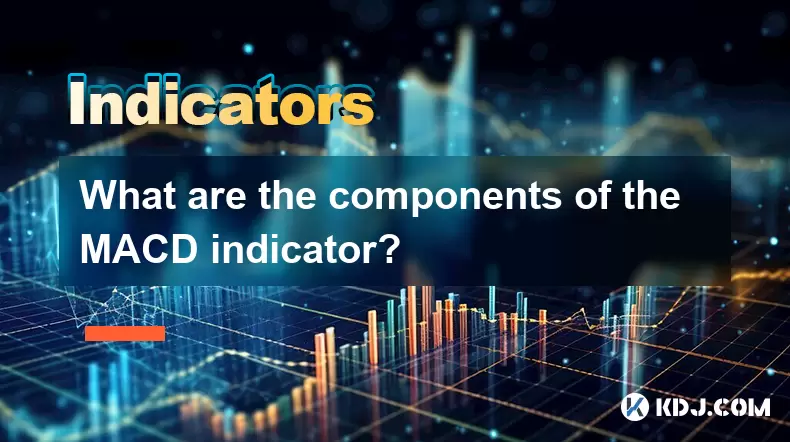-
 Bitcoin
Bitcoin $114800
-0.87% -
 Ethereum
Ethereum $4776
1.26% -
 XRP
XRP $3.035
-0.59% -
 Tether USDt
Tether USDt $0.9997
0.01% -
 BNB
BNB $868.3
-2.21% -
 Solana
Solana $207.8
2.24% -
 USDC
USDC $0.9999
0.00% -
 Dogecoin
Dogecoin $0.2321
-2.70% -
 TRON
TRON $0.3658
1.42% -
 Cardano
Cardano $0.9042
-1.85% -
 Chainlink
Chainlink $25.67
-0.24% -
 Hyperliquid
Hyperliquid $43.96
1.17% -
 Sui
Sui $3.679
-2.11% -
 Stellar
Stellar $0.4091
-1.83% -
 Ethena USDe
Ethena USDe $1.000
-0.01% -
 Bitcoin Cash
Bitcoin Cash $593.4
0.58% -
 Avalanche
Avalanche $25.53
0.89% -
 Hedera
Hedera $0.2476
-1.21% -
 Litecoin
Litecoin $119.7
-1.84% -
 UNUS SED LEO
UNUS SED LEO $9.609
0.34% -
 Toncoin
Toncoin $3.352
-0.91% -
 Shiba Inu
Shiba Inu $0.00001292
-2.45% -
 Uniswap
Uniswap $11.08
-1.13% -
 Polkadot
Polkadot $4.100
-1.09% -
 Cronos
Cronos $0.1609
4.53% -
 Dai
Dai $0.9999
0.00% -
 Bitget Token
Bitget Token $4.706
-0.88% -
 Aave
Aave $350.1
2.03% -
 Monero
Monero $268.0
0.06% -
 Ethena
Ethena $0.7069
-4.77%
What are the components of the MACD indicator?
The MACD indicator helps crypto traders spot momentum shifts and trend reversals through its MACD Line, Signal Line, and Histogram, with crossovers and divergences offering key buy/sell signals.
Aug 12, 2025 at 03:29 pm

Understanding the MACD Indicator in Cryptocurrency Trading
The MACD (Moving Average Convergence Divergence) is a widely used technical analysis tool in the cryptocurrency trading community. It helps traders identify potential trend reversals, momentum shifts, and entry or exit points. The indicator is particularly effective in volatile markets such as those involving digital assets. The MACD is composed of several distinct elements that work together to provide a comprehensive view of price momentum. Each component plays a unique role in shaping the overall signal generated by the indicator.
The MACD Line: Core of the Indicator
The MACD Line is the foundation of the entire indicator. It is calculated by subtracting the 26-period Exponential Moving Average (EMA) from the 12-period EMA of an asset’s closing price. This difference highlights the relationship between two moving averages of different lengths, revealing short-term momentum compared to longer-term trends.
- Calculate the 12-period EMA of the closing prices
- Calculate the 26-period EMA of the closing prices
- Subtract the 26-period EMA from the 12-period EMA
The resulting value forms the MACD Line, which oscillates above and below a zero centerline. When the MACD Line crosses above zero, it suggests bullish momentum. Conversely, when it crosses below zero, bearish momentum may be emerging. Traders often watch for sharp movements in the MACD Line as early signs of accelerating price action.
The Signal Line: Smoothing the MACD Line
To reduce noise and provide clearer trading signals, the Signal Line is applied. It is a 9-period EMA of the MACD Line itself, acting as a trigger for buy and sell indications. The interaction between the MACD Line and the Signal Line generates key signals used in trading strategies.
- Take the previously calculated MACD Line values
- Compute a 9-period EMA of these values
- Plot the result as the Signal Line
When the MACD Line crosses above the Signal Line, it produces a bullish signal, often interpreted as a potential buy opportunity. When the MACD Line crosses below the Signal Line, it generates a bearish signal, suggesting a possible sell or short entry. These crossovers are among the most watched events in technical analysis, especially in fast-moving crypto markets.
The Histogram: Visualizing Momentum
The MACD Histogram represents the difference between the MACD Line and the Signal Line. It is displayed as a series of vertical bars on a chart, making it easy to visualize the strength and direction of momentum.
- Subtract the Signal Line value from the MACD Line value at each point
- Plot the difference as a bar on the histogram
- Positive values appear above the zero line; negative values below
The height of the bars reflects the magnitude of the divergence. Expanding bars indicate increasing momentum, while shrinking bars suggest weakening momentum. For example, if the histogram bars are growing taller above zero, bullish momentum is accelerating. If bars below zero are getting shorter, bearish momentum may be fading. This visual cue helps traders anticipate potential reversals before crossovers occur.
Zero Line and Centerline Crossovers
The zero line serves as a critical reference point within the MACD indicator. It separates positive and negative momentum. When the MACD Line crosses above the zero line, it indicates that the short-term EMA (12-period) has moved above the long-term EMA (26-period), signaling bullish strength.
- Monitor the position of the MACD Line relative to the zero line
- A cross above zero reinforces bullish sentiment
- A cross below zero supports bearish sentiment
These centerline crossovers are often used to confirm trend direction. In cryptocurrency trading, where trends can emerge rapidly, a zero line crossover combined with volume analysis can increase the reliability of the signal. Traders may wait for the MACD Line to remain above or below zero for several periods to avoid false signals caused by market noise.
Practical Application in Cryptocurrency Charts
Applying the MACD indicator to a cryptocurrency chart involves several steps within most trading platforms such as TradingView, Binance, or MetaTrader.
- Open your preferred charting platform
- Locate the indicators menu and search for “MACD”
- Select the MACD indicator to apply it to the price chart
- Adjust the default parameters (12, 26, 9) if needed for specific strategies
- Observe the three components: MACD Line, Signal Line, and Histogram
Traders often combine the MACD with other tools like RSI (Relative Strength Index) or support/resistance levels to filter signals. For example, a bullish MACD crossover occurring near a key support level in Bitcoin might be considered a stronger buy signal. Similarly, divergence patterns—where price makes a new high but the MACD does not—can warn of potential reversals.
Frequently Asked Questions
What does a MACD divergence indicate in crypto trading?
A MACD divergence occurs when the price of a cryptocurrency moves in the opposite direction of the MACD indicator. For instance, if the price reaches a new high but the MACD fails to surpass its previous high, this bearish divergence may suggest weakening upward momentum and a potential reversal. Conversely, bullish divergence happens when price makes a lower low but MACD forms a higher low, indicating possible upward reversal.
Can the MACD parameters be customized for different cryptocurrencies?
Yes, traders can adjust the default EMA periods (12, 26, 9) to suit specific assets or timeframes. For highly volatile altcoins, shorter periods like (8, 18, 6) may provide more responsive signals. However, changing parameters increases the risk of false signals, so backtesting is essential before live trading.
How is the MACD different from the RSI?
The MACD measures momentum by comparing EMAs, focusing on trend direction and strength through crossovers and divergence. The RSI measures overbought or oversold conditions on a scale from 0 to 100. While both assess momentum, MACD emphasizes trend changes via moving averages, whereas RSI evaluates price extremes based on recent gains and losses.
Is the MACD reliable in sideways or ranging crypto markets?
In ranging markets, the MACD may produce frequent and conflicting signals due to price oscillations without a clear trend. Crossovers can occur rapidly, leading to false entries. Traders often use additional tools like Bollinger Bands or ADX to confirm whether the market is trending before relying on MACD signals.
Disclaimer:info@kdj.com
The information provided is not trading advice. kdj.com does not assume any responsibility for any investments made based on the information provided in this article. Cryptocurrencies are highly volatile and it is highly recommended that you invest with caution after thorough research!
If you believe that the content used on this website infringes your copyright, please contact us immediately (info@kdj.com) and we will delete it promptly.
- Viral Memes, RWA Platforms, and DePIN Crushers: What's Hot in Crypto?
- 2025-08-24 14:45:20
- Meta's Hypernova Glasses: AR's Next Big Thing?
- 2025-08-24 15:05:15
- Down Under Showdown: Australia vs. South Africa in ODI Cricket
- 2025-08-24 15:10:14
- XYZVerse, Shiba Inu, and the 2025 Bull Cycle: A Meme Coin Evolution
- 2025-08-24 13:05:12
- WLFI Token, BingX, and the Trading Landscape: A New York Perspective
- 2025-08-24 12:45:20
- Aave, Governance, Allocation: Navigating DeFi's Shifting Sands
- 2025-08-24 12:45:20
Related knowledge

What does it mean when the +DI and -DI cross frequently in the DMI indicator but the ADX is flattening?
Aug 11,2025 at 03:15am
Understanding the DMI Indicator ComponentsThe Directional Movement Index (DMI) is a technical analysis tool composed of three lines: the +DI (Positive...

What does the sudden appearance of a "dark cloud cover" candlestick pattern during an uptrend indicate?
Aug 13,2025 at 11:35am
Understanding the 'Dark Cloud Cover' Candlestick PatternThe dark cloud cover is a bearish reversal pattern in technical analysis that typically appear...

What does it mean when the moving average, MACD, and RSI all send buy signals simultaneously?
Aug 11,2025 at 01:42pm
Understanding the Convergence of Technical IndicatorsWhen the moving average, MACD, and RSI all generate buy signals at the same time, traders interpr...

What does it mean when both the KDJ indicator and the RSI show overbought signals simultaneously?
Aug 13,2025 at 11:35am
Understanding the KDJ Indicator in Cryptocurrency TradingThe KDJ indicator is a momentum oscillator derived from the Stochastic Oscillator, widely use...

What does it mean when the price is trading above the SAR indicator but the red dots are densely packed?
Aug 09,2025 at 11:49pm
Understanding the SAR Indicator and Its Visual SignalsThe SAR (Parabolic Stop and Reverse) indicator is a technical analysis tool used primarily to de...

What does it mean when the candlestick chart forms a "Morning Star" but trading volume is sluggish?
Aug 12,2025 at 06:28pm
Understanding the Morning Star Candlestick PatternThe Morning Star is a three-candle bullish reversal pattern commonly observed in cryptocurrency pric...

What does it mean when the +DI and -DI cross frequently in the DMI indicator but the ADX is flattening?
Aug 11,2025 at 03:15am
Understanding the DMI Indicator ComponentsThe Directional Movement Index (DMI) is a technical analysis tool composed of three lines: the +DI (Positive...

What does the sudden appearance of a "dark cloud cover" candlestick pattern during an uptrend indicate?
Aug 13,2025 at 11:35am
Understanding the 'Dark Cloud Cover' Candlestick PatternThe dark cloud cover is a bearish reversal pattern in technical analysis that typically appear...

What does it mean when the moving average, MACD, and RSI all send buy signals simultaneously?
Aug 11,2025 at 01:42pm
Understanding the Convergence of Technical IndicatorsWhen the moving average, MACD, and RSI all generate buy signals at the same time, traders interpr...

What does it mean when both the KDJ indicator and the RSI show overbought signals simultaneously?
Aug 13,2025 at 11:35am
Understanding the KDJ Indicator in Cryptocurrency TradingThe KDJ indicator is a momentum oscillator derived from the Stochastic Oscillator, widely use...

What does it mean when the price is trading above the SAR indicator but the red dots are densely packed?
Aug 09,2025 at 11:49pm
Understanding the SAR Indicator and Its Visual SignalsThe SAR (Parabolic Stop and Reverse) indicator is a technical analysis tool used primarily to de...

What does it mean when the candlestick chart forms a "Morning Star" but trading volume is sluggish?
Aug 12,2025 at 06:28pm
Understanding the Morning Star Candlestick PatternThe Morning Star is a three-candle bullish reversal pattern commonly observed in cryptocurrency pric...
See all articles

























































































